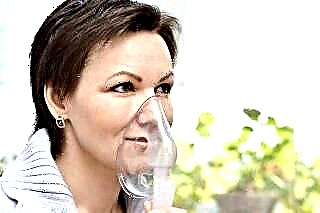In order to prescribe the correct treatment for any disease, it is necessary to clarify the cause of its development. The situation is similar with otitis media in children. Given the anatomical features of the child's body, the course of the disease, approaches to treatment in adults and children may be somewhat different. Therapeutic tactics for ear inflammation in a child also depends on the location and form of otitis media. The condition of the tympanic membrane plays a very important role in the choice of medicines. Evgeny Komarovsky believes that otitis media is a disease where it is absolutely unacceptable to self-medicate. It is the otoscopy performed by the otolaryngologist that will clarify the diagnosis and prescribe the correct treatment.
Predisposing factors

The reasons for frequent otitis media in children are the following age characteristics of the body:
- narrow auditory canal, which is due to the anatomical structure of the child's ear;
- more frequent ARVI in a child, due to the characteristics of the developing immunity;
- enlarged adenoids, since their presence is a predisposing factor for compression of the Eustachian tube and the development of otitis media;
- active sharp movements when blowing your nose or drawing in discharge from the nose contribute to the ingress of mucus from the nasal cavity into the middle ear.
Principles of therapy
Given these features, in his speech about otitis media Komarovsky E.O. offers the following approaches to treating this condition:
- vasoconstrictor nasal drops;
- pain relievers inside;
- antiseptics in the form of ear drops;
- antibiotic therapy.
The appointment of vasoconstrictor drops in a situation when the ear hurts, Komarovsky E.O. explains the pathogenesis of the disease. Indeed, the narrow auditory tube, which connects the nasopharynx with the tympanic cavity, facilitates the entry of nasal discharge into the ear cavity. Any ARVI is accompanied by the presence of edema of the nasal mucosa and auditory tube, which increases the chances of retaining exudate in the tympanic cavity, thereby provoking stagnation in the middle ear and the development of otitis media.
The appointment of nasal drops with a vasoconstrictor effect helps to relieve edema and improve the drainage function of the auditory tube.
 It is the use of these drugs that is the only event that parents can carry out on their own, before consulting a specialist. The range of agents with this effect is huge. These are Galazolin, Naftizin, etc.
It is the use of these drugs that is the only event that parents can carry out on their own, before consulting a specialist. The range of agents with this effect is huge. These are Galazolin, Naftizin, etc.
The development of otitis media is accompanied by symptoms such as severe pain in the ear, an increase in body temperature to 38-38.5 degrees, and malaise. In this regard, to reduce pain, the use of non-steroidal anti-inflammatory drugs is shown, which, in addition to antipyretic, also have analgesic properties. In children, paracetamol and ibuprofen are the drugs of choice.
As for the rest of the approaches to treatment, the choice of antiseptic agents, the use of which is indicated in this case, is also quite sufficient. It could be Otinum, Sofradex. For a long time, the drug of choice was a 3% alcoholic solution of boric acid. Due to its availability and effectiveness, this remedy in the form of ear drops is still used today.
As a choice of drug, you can focus on drops containing a local anesthetic, which will help reduce pain, or a corticosteroid, which is a powerful anti-inflammatory agent.
However, the use of ear drops is possible only after consulting a specialist and conducting an otoscopy, which makes it possible to assess the condition of the tympanic membrane.
The fact is that the appointment of many topical drugs for a perforated eardrum is contraindicated, since they have an ototoxic effect. Their use can aggravate the process or even lead to permanent hearing loss. Such dangerous components include non-steroidal anti-inflammatory drugs, ethyl alcohol, and some antibiotics.
The need for antibiotic therapy
Regarding the treatment of otitis media without antibiotics, Komarovsky argues as follows:
- In the overwhelming majority of cases, recovery occurs without the use of antibacterial agents;
- Since ARVI is a common cause of otitis media, in this case, antibiotic therapy cannot be effective;
- In cases where there is suppuration in the development of the disease, antibiotics are an integral part of complex treatment.
To decide on the use of antibiotic therapy, the doctor must determine not only the localization of the process, but the form of otitis media and the integrity of the tympanic membrane. The presence of catarrhal otitis media is not a reason to prescribe ear drops or tablets with an antibacterial component. In this case, it is quite enough to restrict ourselves to vasoconstrictive nasal drops, paracetamol in the form of syrup or tablets, and topical preparations with antiseptic and anti-inflammatory effects.
determine not only the localization of the process, but the form of otitis media and the integrity of the tympanic membrane. The presence of catarrhal otitis media is not a reason to prescribe ear drops or tablets with an antibacterial component. In this case, it is quite enough to restrict ourselves to vasoconstrictive nasal drops, paracetamol in the form of syrup or tablets, and topical preparations with antiseptic and anti-inflammatory effects.
According to Komarovsky, exudative otitis media already indicates the need to turn to antibacterial drugs. Within a short time, sometimes several hours, otitis media can pass into a purulent form. Most often, such a development of the situation is accompanied by perforation of the tympanic membrane, and the release of purulent contents into the external auditory canal.
The presence of suppuration indicates a bacterial pathogen and the need to urgently correct the treatment with the appointment of antibacterial agents.
It can be both ear drops and tablet forms. The drugs of choice are the antibiotic amoxicillin and its derivatives, as well as sulfonamide biseptol. Injectable drugs in the treatment of otitis media are not widespread. In the absence of perforation, prescribing a local agent, it is necessary that it has the ability to penetrate the intact tympanic membrane.
In the event that a decision is made to use this group of drugs, it is necessary to take them in accordance with the appointment of a specialist, for at least 10 days. Somewhat shorter, 7 days, antibiotics can be used by children under two years of age or not attending preschool. It is the incorrect use of these funds that can lead to relapses of the disease or the development of complications.
Komarovsky E.O. he suggests treating purulent otitis media and otorrhea as a completely natural development of the process. Suppuration should not cause any panic either at this stage, or in terms of forecasts. Moreover, in cases where a child has a pronounced pain syndrome, intoxication phenomena, during an otoscopy, the doctor determines a bulging eardrum, then for the speedy normalization of the situation, the patient can undergo a surgical procedure for perforating the eardrum, paracentesis.
The importance of thermal procedures
Doctor Komarovsky has his own special opinion on the use of warming procedures and compresses in the treatment of ear inflammation. The need to warm the ear with dry heat (a layer of cotton wool, a warm hat) is due to the fact that any touch to the external auditory canal or even the auricle is accompanied by increased pain. The use of thermal procedures contributes, in this case, to immobilization, and therefore to the rest of the organ and a decrease in pain.
compresses in the treatment of ear inflammation. The need to warm the ear with dry heat (a layer of cotton wool, a warm hat) is due to the fact that any touch to the external auditory canal or even the auricle is accompanied by increased pain. The use of thermal procedures contributes, in this case, to immobilization, and therefore to the rest of the organ and a decrease in pain.
As for more active physiotherapeutic measures, in particular, compresses, these procedures are contraindicated for children, since the reaction to them, due to the imperfect immune system and thermoregulation in the child, may be far from expected. In addition, carrying out thermal procedures for purulent otitis media, according to Komarovsky E.O., is dangerous and can lead to severe complications such as meningitis. For the treatment of otitis media Komarovsky E.O. allows carrying out physiotherapeutic procedures only at the recovery stage, when suppuration is already absent and the eardrum begins to scar.
Correct, timely prescribed treatment of otitis media promotes rapid recovery, even with an acute purulent process. A minor scar of the tympanic membrane is not a reason for hearing loss or relapse. In this regard, it is of great importance to timely consult a specialist to clarify the diagnosis and prescribe the correct treatment.



